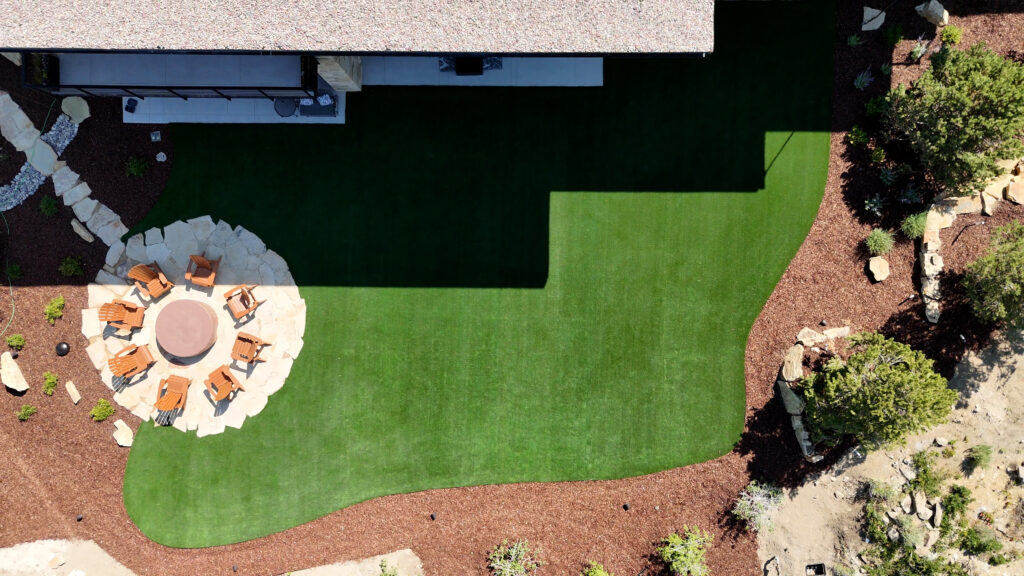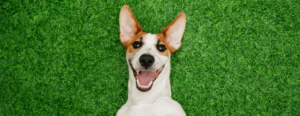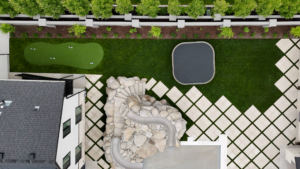When it comes to modern driveway designs, homeowners are increasingly looking beyond traditional concrete slabs. One of the hottest trends transforming outdoor spaces is the strategic use of synthetic grass driveway elements and turf accents for concrete areas. Whether you’re considering a grass strip driveway or artificial grass between pavers, these creative applications can dramatically boost your home’s curb appeal with synthetic grass while offering practical benefits.
Innovative Uses of Turf in Driveways
A grass and concrete driveway creates a stunning visual contrast that immediately catches the eye. The most popular approach is the classic driveway with grass strip design, where synthetic turf runs between two parallel concrete tracks where your vehicle’s tires travel. This concrete and grass driveway configuration reduces the amount of hardscaping needed while creating a softer, more inviting entrance to your home.
Beyond traditional strip layouts, driveways with grass and concrete can incorporate checkerboard patterns, geometric designs, or curved accents that complement your home’s architecture. Integrating turf in hardscaping allows you to break up large expanses of concrete or pavers, creating visual interest and a more environmentally conscious aesthetic. These modern driveway designs work particularly well in contemporary and mid-century modern homes, but can be adapted to virtually any architectural style.
Design Ideas for Turf Accents
Enhancing hardscapes with turf opens up endless creative possibilities. Consider these popular applications:
- Driveway strips: Create parallel turf bands between concrete tire tracks, ranging from narrow 6-inch strips to wider 18-24 inch sections, depending on your vehicle’s wheelbase and design preferences
- Between pavers: Use artificial grass between pavers to soften walkways, patios, or pool decks with a resort-like atmosphere
- Geometric patterns: Design checkerboard layouts or angular accents that complement modern architecture
- Border accents: Frame your driveway edges with turf strips that tie into surrounding landscape beds
When planning your grass strip driveway, think about the entire landscape flow. Extending the turf theme into bordering garden beds or creating matching accents throughout your hardscape creates a cohesive, professionally designed look that enhances overall curb appeal with synthetic grass.
Installation Considerations
While a synthetic grass driveway offers many advantages, proper installation is critical for long-term success. The area must have adequate drainage to prevent water pooling, and a solid base is essential, especially for driveways that will see vehicle traffic. Quality synthetic turf designed for high-traffic applications should be selected over standard landscape varieties.
One consideration is weight tolerance. While the turf strips themselves won’t bear vehicle weight, choosing appropriate infill and ensuring proper compaction of the base layer prevents settling over time. Professional installation is often recommended to ensure proper grading and drainage integration with your concrete work; however, great DIY results are perfectly attainable with proper preparation.
Maintenance Tips for Turf in Hardscapes
One of the biggest advantages of a grass and concrete driveway is the reduced maintenance compared to natural grass. Your synthetic turf requires minimal upkeep:
- No mowing, watering, or fertilizing needed
- Occasional rinsing to remove dust and debris from vehicle traffic
- Periodic brushing to keep turf fibers upright and looking fresh
- Quick cleanup of any oil or fluid leaks to prevent staining
While driveway turf may need more frequent cleaning due to vehicle traffic, this is still far less maintenance than keeping living grass healthy in the same high-traffic location.
Frequently Asked Questions
How can I use turf in my driveway design?
Turf can be incorporated in multiple ways, from classic parallel strips that create tire tracks to creative geometric patterns. The most common approach is installing synthetic grass between two concrete or paver strips where your tires travel. You can also use turf to create borders, circular accents, or even full grass panels alternating with pavers for a contemporary checkerboard effect.
Is artificial grass suitable between pavers?
Absolutely! Artificial grass between pavers is an excellent application that’s growing in popularity. The turf fills joints and gaps beautifully, creating a seamless, manicured look without the maintenance headaches of keeping natural grass alive in these challenging spaces. Make sure to use quality turf with proper drainage backing for the best results.
What are the benefits of turf hardscape accents?
Turf hardscape accents offer numerous benefits: they reduce heat absorption compared to solid concrete, add visual interest and texture, decrease the amount of hardscaping material needed (which can reduce costs), improve drainage when properly installed, require minimal maintenance, stay green year-round, and significantly enhance curb appeal. They’re particularly valuable in creating an eco-conscious aesthetic while maintaining the durability needed for high-traffic areas.



